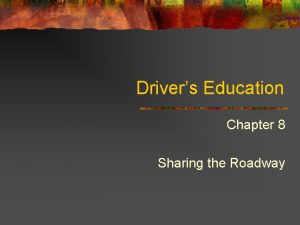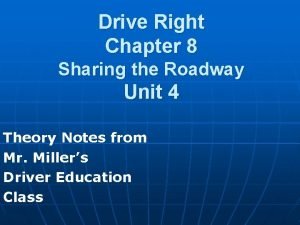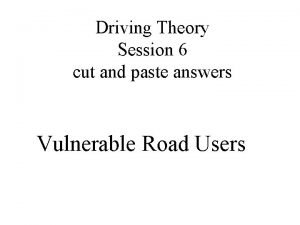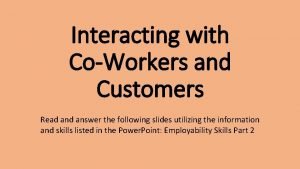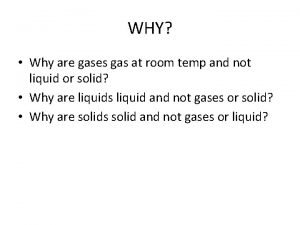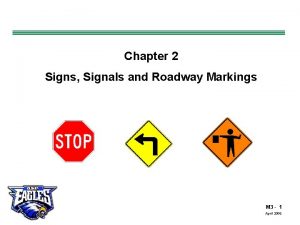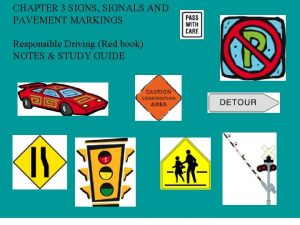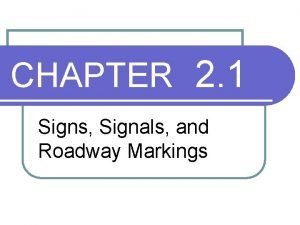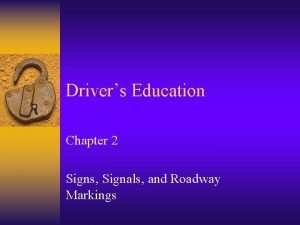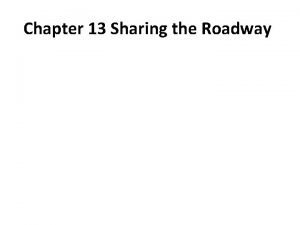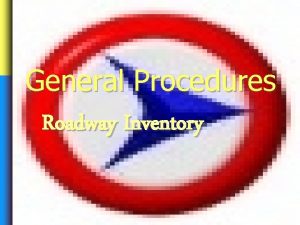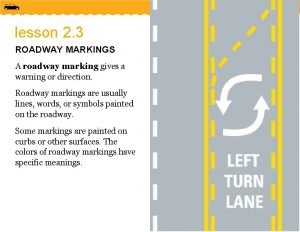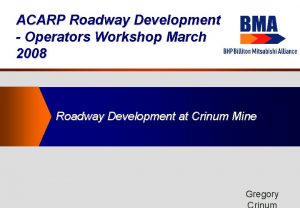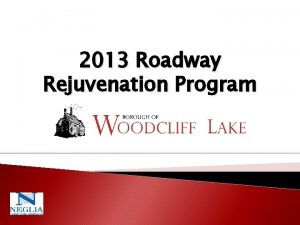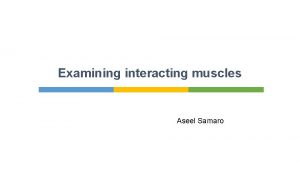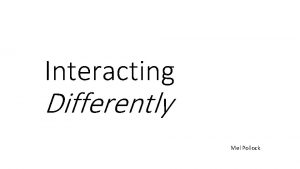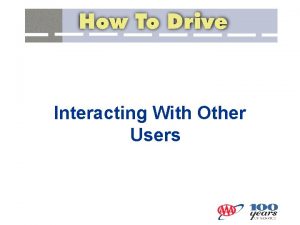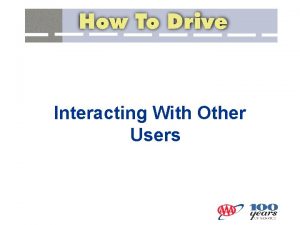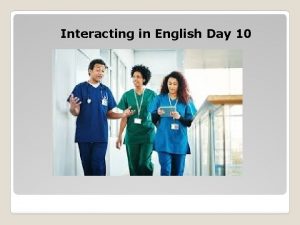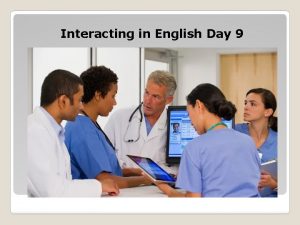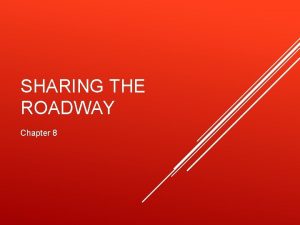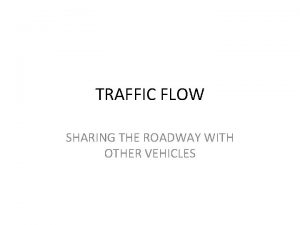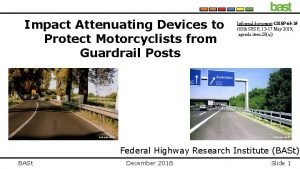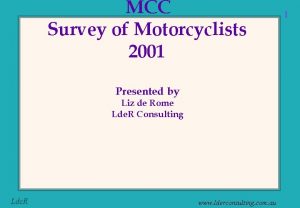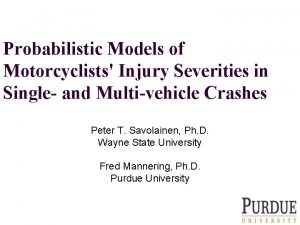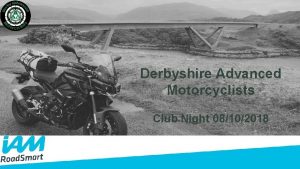Sharing The Roadway Chapter 8 Interacting With Motorcyclists
























- Slides: 24

Sharing The Roadway Chapter 8

Interacting With Motorcyclists • In collisions, who is usually at fault? • Why are injuries so often severe? • Exposed position of the driver

Using the IPDE Process to Protect Motorcyclists • Drivers are usually alert for larger vehicles • Motorcycles are smaller • Move within lane • Drivers need to take extra care to be aware of motorcyclists

Identification • Size and location of lights • Small size makes it difficult to judge speed – Especially at night • Identify places where motorcycles might be – Scanning

Where do I look? • Motorcycles can travel several places in the lane • Turning left; check planned path • Turning right; check blind spot and mirrors • Motorcyclist passing car; intersections

Where do I look? Continued • Tailgating motorcyclists; increase your interval • Motorcyclists riding in the blind spot – Big picture – Changing lanes

Passing a Motorcyclist • Stay well back until you intend to pass • Use entire left lane when passing • Return to lane only after you can see the motorcyclist in your rearview mirror

Protecting Motorcyclists • Motorcyclists can lack experience and skill – Rented or borrowed • Handling traits of Motorcycles – Road and weather conditions • Increase following distance • Make the motorcyclist aware of you – Do not assume

Use of Protective Equipment • Motorcyclists must protect themselves • Helmet • Eye protection • Heavy shoes or boots • Full-length pants and jacket made of heavy material • Gloves


Adverse Weather Conditions • Filled potholes • Immediately after rain begins • No windshield wipers • Cautious around RR crossings and painted lines……Very slippery • Harder to see them

Motorcyclists Crossing Railroad Tracks • Tires can get caught in grooves • Cross at RIGHT angle – As long as they stay in their lane • Give them room and expect them to take the tracks slow

How Motorcyclists Can Help Car Drivers • Be visible in traffic – Lane positioning • Ride in groupsstaggered position • Riding at night – Reflective tape – Light colored clothing

Bicyclists Responsibilities • • • Follow all rules of motorists Ride on the right side of the road Walk across intersections Light colored clothing, reflectors Do not listen to headphones

Protecting Bicyclists • • Give them extra space Start passing maneuver well ahead Alert bicyclist of your presence- horn Reduce speed

Mopeds and Motor Scooters • Moped: motor driven bicycle • Motor scooters: low powered motorcycles • Most states require operators to have a drivers license, some require special license • Restricted high speed roadways

Pedestrians • • • Children and elderly at highest risk Yield to pedestrians They may not even look for cars May stand in street instead of curb Alleys and driveways Jogging areas

Buses • Rules for Buses • Railroad crossings • Other buses

Emergency Vehicles • Find a safe place on right side of road • Pull over to side and come to a stop • Wait until emergency vehicle passes • Check for another before proceeding

Interacting With Trucks • Three classifications of trucks – light, medium, heavy • Tractor trailers – tractor-semi-trailer (eighteen wheeler) – double trailer – triple trailers

Following Trucks • Take longer to stop, except on wet roads • Leave a greater interval • Trucks blind spot (No Zones) • Drive near the left Part of the lane

Meeting Trucks • Move slightly to the right of your lane • May feel a wind gust • Hold the steering wheel firmly

Passing Trucks • Can travel as fast as cars • When possible pass when driver is shifting • Must be done legally • Use caution • No Zone

Trucks Making Right Turns • Make very wide turns • Stay far behind • Stay out of the open space to the right of the turn • Never pass the truck on the right – May be turning – AAA video – Sharing the Road with Big Trucks (8 min) – SMART Video (12 min. )
 Chapter 8 drivers ed answers signs
Chapter 8 drivers ed answers signs Motorcyclists can make themselves more visible at night by.
Motorcyclists can make themselves more visible at night by. How will a school crossing patrol signal you to stop
How will a school crossing patrol signal you to stop Interacting with coworkers
Interacting with coworkers Interacting molecules or ions
Interacting molecules or ions Interacting cognitive subsystems
Interacting cognitive subsystems Chapter 2 signs, signals, and roadway markings
Chapter 2 signs, signals, and roadway markings Regulatory signs color
Regulatory signs color No-parking zones are often near
No-parking zones are often near Signs signals and pavement markings
Signs signals and pavement markings Chapter 2 signs signals and roadway markings
Chapter 2 signs signals and roadway markings A short section of corrugated roadway that warns of hazards
A short section of corrugated roadway that warns of hazards Hình ảnh bộ gõ cơ thể búng tay
Hình ảnh bộ gõ cơ thể búng tay Lp html
Lp html Bổ thể
Bổ thể Tỉ lệ cơ thể trẻ em
Tỉ lệ cơ thể trẻ em Voi kéo gỗ như thế nào
Voi kéo gỗ như thế nào Tư thế worm breton
Tư thế worm breton Bài hát chúa yêu trần thế alleluia
Bài hát chúa yêu trần thế alleluia Các môn thể thao bắt đầu bằng tiếng bóng
Các môn thể thao bắt đầu bằng tiếng bóng Thế nào là hệ số cao nhất
Thế nào là hệ số cao nhất Các châu lục và đại dương trên thế giới
Các châu lục và đại dương trên thế giới Công của trọng lực
Công của trọng lực Trời xanh đây là của chúng ta thể thơ
Trời xanh đây là của chúng ta thể thơ Cách giải mật thư tọa độ
Cách giải mật thư tọa độ
